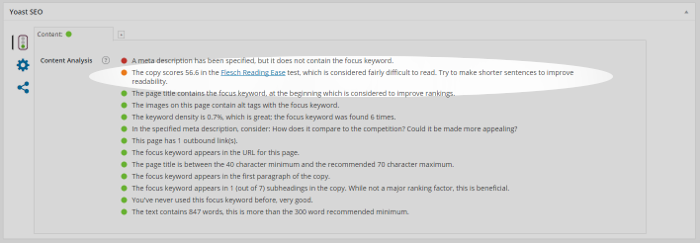How many people who access your blog actually read the content you publish?
While we can understand that this is a difficult question to answer, something persuades them to share your content. But what exactly is it? The titles you use, the ideas you present or how you present them?
However, why do you need to know if your content is being read in the first place? Isn’t it enough that people press the ‘like’ or ‘share’ button?
Not quite. Besides the fact that readable content gets more views, likes and shares, which usually result in more visitors driven to your website, it should help you establish your company as an authority figure in your niche. This way, you have a greater chance of becoming the one-stop “shop” for your current and potential customers. But for this, you need to create exceptionally good, readable content that people will love to read and share.
What Does Readable Content Actually Mean?
Essentially, readable content means using legible (sans serif) fonts, such as Arial, Verdana, Calibri and Helvetica, and words that people can understand easily. What about the content you post on a regular basis? Is it readable enough for your target audience?
The easiest way to determine the readability of your blog posts and articles is to use the Flesch-Kincaid readability tests. These tests generate a readability score that indicates how difficult to read (and understand) your content is.
These tests use complex mathematical formulae that count sentences per paragraph, words per sentence and characters per word. The shorter the words, sentences and paragraphs, the higher the readability score will be. A high score means that your content is readable (and lovable).
Another point worth mentioning is that you need to correlate the readability score of your content with the reading grade level of your target audience. Based on the Flesch-Kincaid theory, your writing should get a score between:
[section class=”white-text” background_color=”#1f8fc6″ background_repeat=”repeat” background_position=”center top” background_attachment=”static” background_scroll=”none” padding_bottom=”0″ padding_top=”0″]
[list type=”icon” style=”simple” icon=”dashboard”]
- 0 and 30 for college graduates;
- 30 and 50 for college level;
- 50 and 70 for high school level;
- 70 and 100 for middle school level.
[/list]
[/section]
One way to determine the educational readability tendencies of your intended audience is to create buyer personas and establish their education level. Also, you can find out the reading grade level of your target audience by checking what they read online. If most of your target personas read science magazines, for example, you can use online tools to get the readability score of those publications. Then, you can create blog posts that reflect the same level of difficulty.
The easiest way to measure the readability of your content is to add Flesch-Kincaid readability apps to your website. On the other hand, if you already have a WordPress blog with Yoast SEO plugin, you’re in luck. That’s because this plugin not only analyses content but also makes suggestions on how to improve the readability of your writing.

Going beyond the Readability Score
Though the readability score is an indicator of how readable (and presumably likable) your content is, a high score cannot guarantee that people will actually read and share your posts. That’s because most of us lose interest if the first few sentences don’t catch our attention and “bounce” right back. In this context, readable content means creating introductions that capture people’s attention and tying great ideas together in a coherent piece.
What’s more, Google records bounce and exit rates of each page for future reference. When someone is looking for information online, the first pages that show up are those with low bounce and exit rates.
In addition, current Google algorithms rate not only the readability but also the quality and accuracy of each piece of content you post online. Low-quality content will get you a low rating, and this can move your site to the end of the line.
To help you out, here are a few guidelines that can make you successful at creating content.
[list type=”icon” style=”none” icon=”ok”]
- make sure the information you present is relevant, accurate, meaningful, interesting and consistent with your overall marketing strategy;
- come up with surprising and compelling headlines;
- break complex topics into multiple blog posts;
- use as many subheads as possible;
- divide content using bullets and line breaks;
- use relevant links instead of repeating the same information over an over again;
- use strategic formatting (e.g. bold subheads and important concepts, use appropriate fonts, colours and sizes, etc.);
- ensure that your content is also mobile friendly.
[/list]
By using the readability score in conjunction with theese content creation tips and tricks, you’ll be able to craft content that people will actually read, like and love to share. Needless to say, this will translate into a more lucrative content marketing strategy that will bring you more site visitors, a higher conversion rate and additional revenue.

